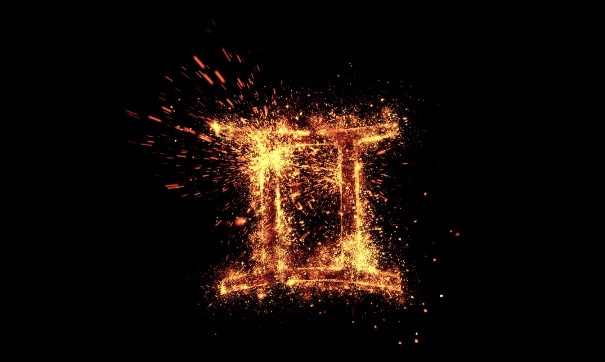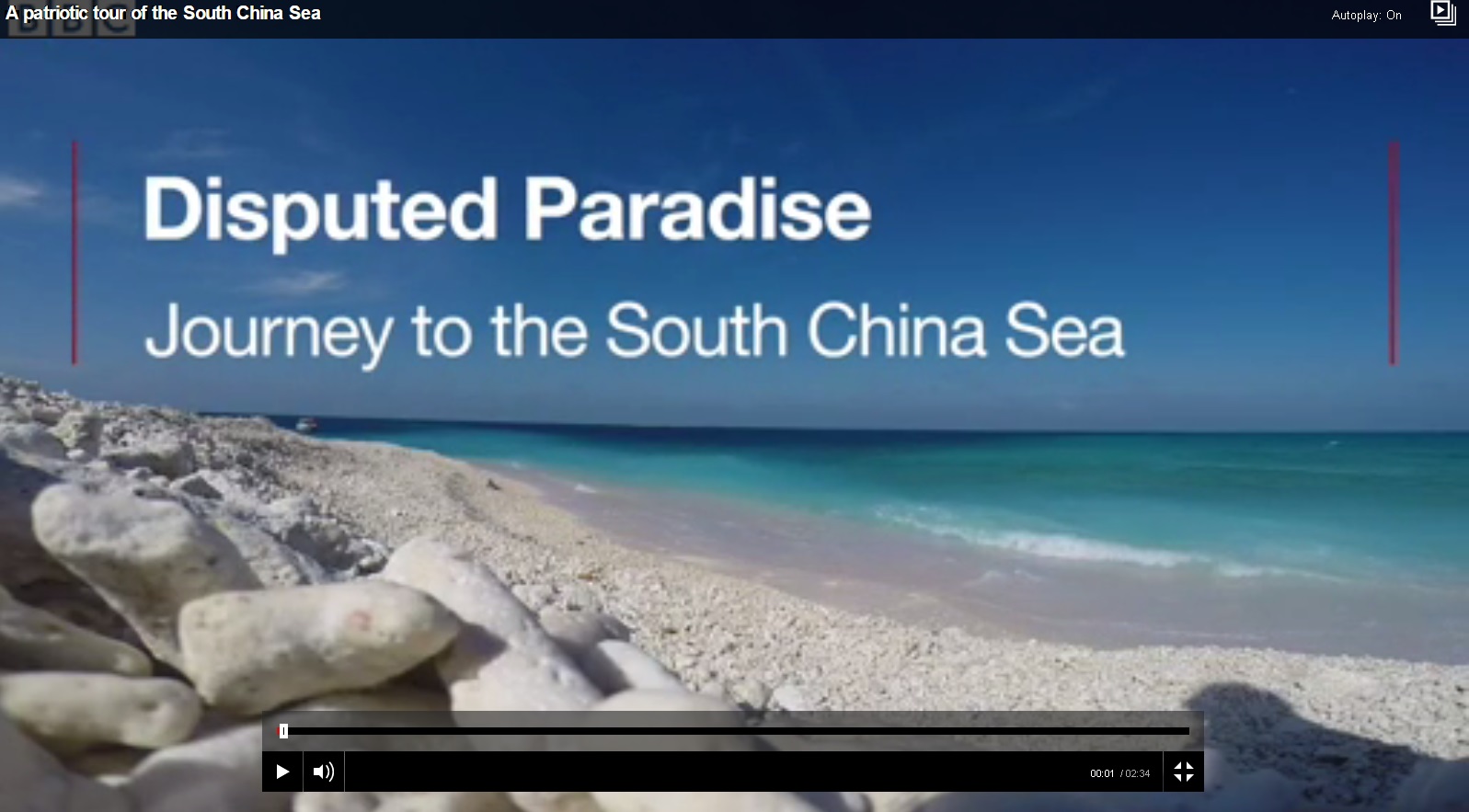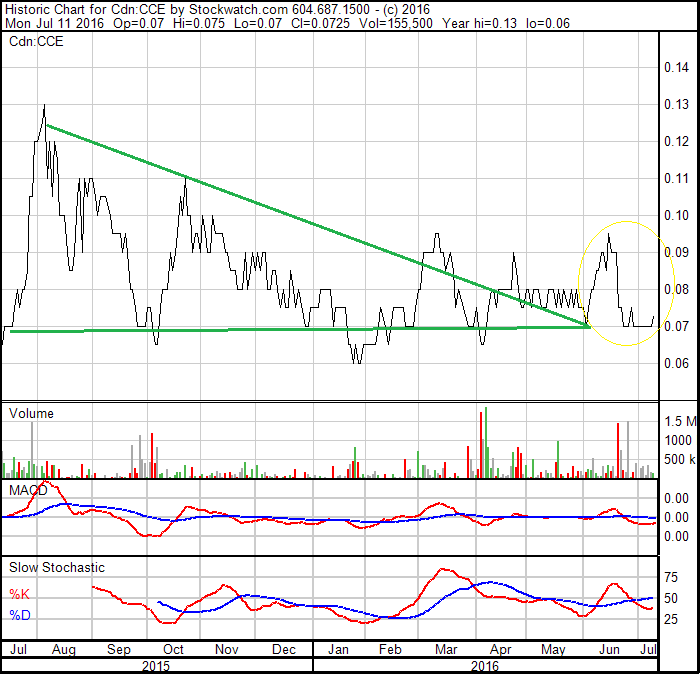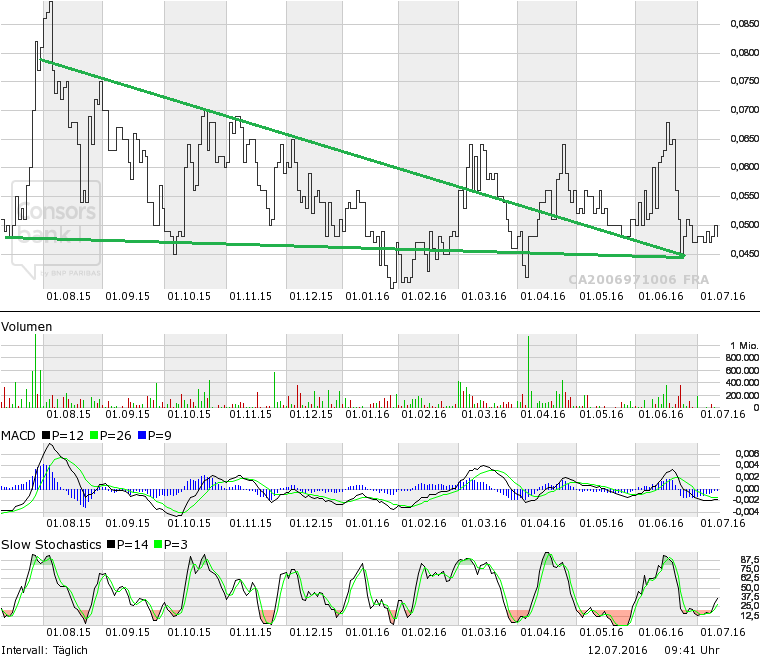Veröffentlichung im Auftrag von Commerce Resources Corp. und Zimtu Capital Corp.
Im heutigen Report werden 4 Artikel über die zunehmenden Spannungen im Südchinesischen Meer ("South China Sea") präsentiert. Offensichtlich erhitzen sich die Gemüter in zunehmendem Maße. Die Wahrscheinlichkeit eines zu begehenden Fehlers ist ungemein gestiegen. China will im Grunde genommen eine Flugverbotszone über all diese umstrittenen Territorien einrichten, woraufhin der Luftraum bishin zu den Philippinen hinzugefügt werden soll. Kurz nachdem China den Luftraum zwischen China und Taiwan zur Flugverbotszone erklärt hat, feuerte Taiwan "versehentlich" eine Rakete in Richtung China. Aus Versehen? Wirklich?
Ein US-Analyst sagte gestern folgendes über die wichtige Entscheidung, die heute gefällt werden soll: "China macht derzeit den Eindruck, zu schwächeln – sowohl wirtschaftlich als auch politisch – und das beste Mittel, um keinen schwachen Eindruck zu hinterlassen, ist den Einsatz auf nationalistischer Ebene zu erhöhen, oder wie wir zu pflegen sagen ´die beste Defensive ist eine gute Offensive´. Mit dem im Hinterkopf könnte China sích dazu entscheiden, in Hinsicht auf den heute erwarteten Entscheid etwas konkretes zu tun."
Die Anzahl der Zwischenfälle ist in den letzten paar Jahren exponentiell angestiegen, sodass schon fast wöchentlich von einem internationalen Vorfall zwischen China und jemand anderen zu hören ist, sei es Japan, Taiwan oder Philippinen etc. Laut Staatsverträgen ist die USA dazu verpflichtet, all diese Länder gegen ausländische Aggression zu beschützen.
Hintergrund
Der Grund, weshalb die REE-Preise 2010/2011 förmlich explodierten, basierte auf einem Zwischenfall, der auf globaler geopolitischer Ebene nicht wirklich signifikant war, jedoch für China Grund genug war, um REE-Lieferungen nach Japan zu unterbinden. Auszug aus dem Rockstone Report "Die Mountain Pass Blase und der Ashram Vorteil" (27. August 2015):
Der “Fischerboot”-Zwischenfall vom September 2010: “Die 2010 Senkaku Bootskollision (oder der Minjinyu 5179 Zwischenfall) geschah am Morgen des 7. September 2010, als ein chinesischer Fischdampfer, Minjinyu 5179, der in umstrittenen Gewässern in Betrieb war, mit japanischen Küstenwachbooten nahe den Senkaku Inseln kollidierte.” Warum war es den Chinesen so wichtig, die Besatzung und den Kapitän aus einem vermeintlich illegalen Fischdampfer in umstrittenen Gewässern Japans zu befreien? War China um ihre nationale Sicherheit besorgt? Waren sie über einen westlichen Expansionisten via Japan beunruhigt? Nein, denn ich glaube, dass China schlicht und ergreifend eine Opportunität sah, um ein seit Langem schwebendes Interesse zu adressieren, um mehr Wert aus einem Rohstoff zu schlagen, in dem sie dominant sind – die REEs – und ihren Mehrwert für diesen Rohstoff zu erhöhen, der letztlich mehr Produktion nach China bringen und mehr Arbeitsplätze für die chinesische Bevölkerung schaffen würde. Alles, was sie nur machen mussten, war Japan für kurze Zeit von REE-Lieferungen abzuschneiden.
A South China Sea Explosion: Why China Might Go ‘Rogue’ on July 12, 2016
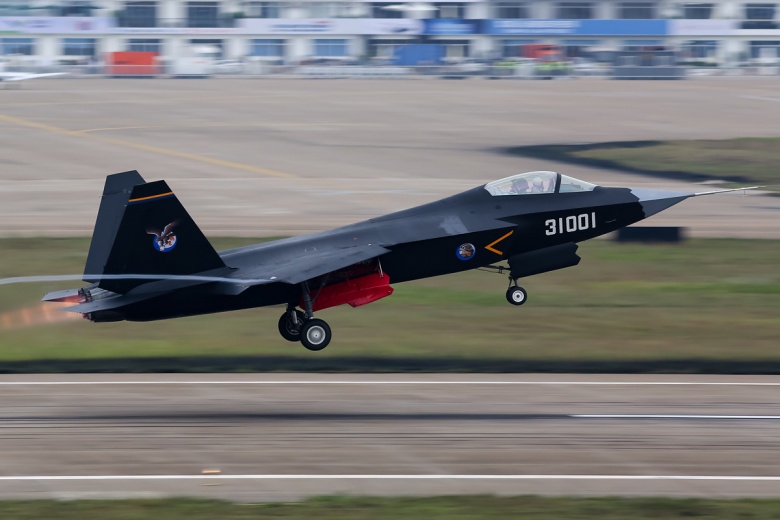
If there ever was a time to follow the always action-packed South China Sea showdown, mark your calendar for July 12th.
Why this specific date? Well, that is the date the International Court of Arbitration has set to issue its ruling in the case of China vs. the Philippines. Most experts are of the collective mind that Beijing is likely to suffer some sort of negative outcome — an outcome they are already trying to distance themselves from.
But what will China do when the verdict is handed down and they likely lose in large measure, as is widely expected?
Beijing has several options — laid out below for your reading pleasure — and most are all bad not only for Asia as a whole, but especially so for Washington, considering it is a treaty ally of Manila and the only party with the capability to reign Beijing in if a crisis occurs:
1. The least likely option – China does nothing and de facto accepts the ruling: What if Beijing simply issues the standard boilerplate statement, declares the South China Sea essentially its sovereign waters, and moves on?
This isn’t a bad option on the surface — China could continue to build on its fake islands in the area, turning them into small military bases armed to the teeth with the latest “carrier-killer” anti-ship weapons, rotate in large amounts of the latest fighter and bomber aircraft and turn the South China Sea into the ultimate anti-access/area-denial zone (A2/AD). In this scenario, Beijing is vocal about its anger towards the ruling, but simply presses on with that it is already doing, which one can argue has been very effective in consolidating its claims.
Such a reaction, mild by Chinese standards these days, seems highly unlikely. Xi Jinping and company will be under tremendous pressure to respond — forcefully and very publicly. The same old strategy won’t apply anymore — many Chinese citizens will demand a tough response, a projection of strength that Beijing won’t be pushed around anymore by external forces in what can only be described as China’s sphere of influence in the South China Sea.
This leads to only two other possibilities — and they all could instigate a dangerous superpower showdown.
2. The most likely option – China declares an Air Defense Identification Zone (ADIZ):
I would argue Beijing has been telegraphing this move for months now. In issuing statements or public comment when asked about the likelihood of such a declaration, most Chinese officials say something to the effect that while no ADIZ is planned at the moment, such a decision in the future would be based on the threat environment in the South China Sea — and I would argue a ruling against Beijing could be the basis to officially change their mind.
The rationale would be easy for Xi and senior leaders to justify in the official press: China would simply declare that it feels threatened by the ruling and that Beijing was simply “forced” into an ADIZ declaration based on the perceived wrongdoings of others and international pressure. And considering China has placed air-defense assets into the area and rotated in and out fighter aircraft, it would seem Beijing has at least a rough capability to make trouble — maybe declare such a zone, even it not completely enforceable, like in the East China Sea, but just a declaration would raise tensions dramatically. Such a zone, depending on its size and scope, could create a regional crisis drawing in parties from all over Asia. It would not be pretty to say the least — and Washington would have to respond, and not just by one or two B-52 flights either.
3. Another possible option – China goes rogue:
What if the deployment of an ADIZ was not enough in Beijing’s eyes and they wanted to press the issue as far as conceivably possible short of kinetic conflict? China could simply decide to press their weight in all of Asia’s flashpoints, essentially going rogue. For example:
– Beijing could increase dramatically the amount of air and naval patrols it conducts in the East China Sea — much to the anger of Japan. And while they are at it, why not start drilling for oil and natural gas in mass all over the area, beyond what is already causing great anxiety in Tokyo to begin with?
– China could decide to up the ante on Taiwan. President Xi could start cutting back dramatically the amount of tourists who come to the island. He could start slowing the amount of trade and investment that Taipei is now essentially dependent on. In fact, Xi has many possible points of pressure he could utilize to make Taiwan squirm — and he might find it very useful to change the conversation in Asia towards tensions across the Taiwan Strait.
– Maybe Beijing decides it’s time to reclaim Scarborough Shoal? This would be the most risky and controversial of moves — Washington seems to have signaled that it just might take some sort of action considering it has rotated assets like the A-10 Warthog and other aircraft in a show of force. However, what does America do if Chinese dredgers appear 150 or so miles off the Philippines coast and decide Scarborough is a great place for China’s next South China Sea military base?
Towards a South China Sea Showdown?
Considering the stakes, Asia watchers the world over will have a busy few days before and after July 12th ruling. Unfortunately for the region, what happens next could give birth to an even more tense situation in the South China Sea — and considering China’s options and what it easily has the capacity to do and has done just in the last few years to dramatically alter the status quo, it seems we are in for a tense filled couple of months.
Harry J. Kazianis is a Senior Fellow for Defense Policy at the Center for the National Interest and Senior Editor for The National Interest magazine. You can follow him on Twitter: @grecianformula
Taiwan Just Fired a Missile Toward China by Accident
Taiwan has elected a new President skeptical of Beijing, raising tensions across the strait
by S @simondlewis on July 1, 2016
Taiwan’s navy has admitted it mistakenly fired a supersonic antiship missile in the direction of China on Friday. The missile ended up landing in the waters of the Taiwan Strait, but it was a frighteningly close call at a time when tensions between Beijing and the government of Taiwan are rising.
Agence France-Presse reports that a Brave Wind III missile was fired accidentally by a warship docked in Taiwan during a drill, and flew almost 50 miles before coming down near the Taiwan-controlled Penghu islands, which sit between Taiwan and the mainland.
China insists Taiwan is one of its provinces, but the island has been self-administered since it was the last holdout of Nationalist forces in 1949 at the end of their civil war with the Chinese Communist Party.
Taiwan — which unlike China holds democratic elections — voted in January this year to elect Tsai Ing-wen, its first female President and the leader of the Beijing-skeptical Democratic Progressive Party, raising fears that cross-strait relations could worsen. After Tsai’s inauguration in May, the central Chinese government appeared to censure her for not explicitly referring to the “consensus” reached at a 1992 meeting between the two governments over the principle of “one China.” [AFP]
Quelle: http://time.com/4390900/taiwan-brave-wind-missile-china-accident
South China Sea: Chinese tours of disputed waters
By BBC on July 11, 2016
On Tuesday a tribunal in the Hague will deliver an eagerly awaited legal ruling on the South China Sea.
Five judges will rule on the status of several contested areas, and they could deliver a blow to China’s claim to sovereignty over the entire South China Sea.
The tribunal can’t decide who owns what - but it is expected to rule on whether any of the features are legally defined as islands under international law.
As our correspondent Jonah Fisher in Manila explains, that in itself has implications for who has the right to the South China Sea’s water and resources.
Read more: China to hold military drills in South China Sea
Click the above image (or here) to watch the BBC video on today’s ruling
Renewed tensions between China and Japan recall 2010 rare earths crisis
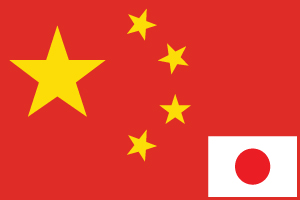
A territorial conflict in the East China Sea flared up again as Japan protested a Chinese warship entering disputed waters. Japan’s vice foreign minister formally objected to the Chinese ambassador on June 8, according to Reuters.
China’s defence ministry defended its actions, telling the news agency, “Chinese naval ships sailing through waters our country has jurisdiction over is reasonable and legal. No other country has the right to make thoughtless remarks about this.”
The dispute concerns islands known as Senkaku in Japan and Diaoyu in China, Reuters added. Coastguard vessels from both countries enter the area regularly, but this is the first visit by a Chinese warship, the agency stated.
A September 2010 incident in the same waters set off a supply crisis for rare earths. Japan arrested a Chinese fishing captain after he twice rammed his boat against a Japanese naval vessel. China responded by cutting off rare earths exports to Japan, pushing REE prices as high as 3,000%, recalls Commerce Resources TSXV:CCE president Chris Grove.
With a rare earths project in northern Quebec and a tantalum-niobium project in British Columbia, he follows geopolitical issues affecting critical supply and demand. Grove says the recent incident reflects a larger problem of “simmering animosity towards the Japanese, which is being stoked by the Chinese government,” as well as the country’s nationalist aggression towards its other neighbours.
“Probably all Chinese governments since 1939 have been more than willing to remind their people about Japan and the Rape of Nanking. From all my time in China, I find it jaw-dropping how often the government, through their media, exhort the people of China to remember Nanking.”
Grove considers China’s 2010 actions “nothing short of brilliant, using a really small geopolitical incident to unilaterally cut off supplies of rare earth elements to Japan, and that’s the world’s second-biggest market. Japan was completely screwed. It brings to mind the tools China has at its disposal.”
Around the same time as the Chinese navy’s June 8 incursion, three Russian naval vessels also sailed near the disputed islands, “raising concern in Japan of a co-ordinated show of force by Beijing and Moscow,” Reuters stated.
One day earlier the U.S. said a Chinese fighter jet confronted an American spy plane at an “unsafe, excessive speed” in international airspace over the East China Sea, the Wall Street Journal reported. It was the second encounter of its kind in a month.
The 2010 incident inspired David S. Abraham’s book The Elements of Power: Gadgets, Guns, and the Struggle for a Sustainable Future in the Rare Metal Age.
Unternehmensdetails
Commerce Resources Corp.
#1450 - 789 West Pender Street
Vancouver, BC, Kanada V6C 1H2
Telefon: +1 604 484 2700
Email: cgrove@commerceresources.com
www.commerceresources.com
Aktien im Markt: 250.008.529
Kanada Symbol (TSX.V): CCE
Aktueller Kurs: $0,0725 CAD (11.07.2016)
Marktkapitalisierung: $18 Mio. CAD
Deutschland Kürzel / WKN (Frankfurt): D7H / A0J2Q3
Aktueller Kurs: €0,048 EUR (12.07.2016)
Marktkapitalisierung: €12 Mio. EUR
Technische Analyse
Seit 2001: http://schrts.co/wR62L5
Seit 11/2013: http://schrts.co/kAtslu
Research Übersicht
Research #17 “Die Regierung Quebec startet Arbeiten mit Commerce Resources“
Research #16 “Glencore-Handel mit Commerce Resources“
Research #15 “Der Erste wird zuerst bedient“
Research #14 “Fragen & Antworten zu meinem Artikel Beleuchtung des Spielfelds der Seltenen Erden“
Research #13 “Beleuchtung des Spielfelds der Seltenen Erden“
Research #12 “Ashrams Pilotanlage erreicht Meilenstein“
Research #11 “Rumble in the REE Jungle: Molycorp vs. Commerce – Die Mountain Pass Blase und der Ashram Vorteil“
Research #10 “Interview mit Darren L. Smith und Chris Grove während sich der Friedhof der REE-Projekte zunehmend füllt“
Research #9 “Lug und Trug mit dem REE-Preiskorb und die Klarheit von OPEX“
Research #8 “Ein fundamentaler Wirtschaftlichkeitsfaktor im REE-Markt: SÄURE“
Research #7 “Die Mine-zum-Markt-Strategie und ihre Motive im REE-Markt“
Research #6 “Was braucht der REE-Markt dringend? (Ausser Verstand)“
Research #5 “Aufstieg zum Brancheprimus kurz vor Vollendung“
Research #4 “Ashram – Die nächste Schlacht um REEs zwischen China und dem Rest der Welt?“
Research #3 “REE-Lagerstätten: Ein einfaches Mittel zur vergleichenden Bewertung“
Research #2 “K.O.-Schlag gegen irre-führende Aussagen in der REE-Branche“
Research #1 “Das K.O.-Kriterium für REE-Aktien: Wie man die Spreu vom Weizen trennt“
Disclaimer: Bitte lesen Sie den vollständigen Disclaimer im vollständigen Research Report als PDF (hier), da fundamentale Risiken und Interessenkonflikte vorherrschen.
